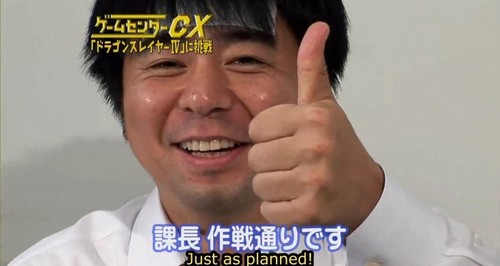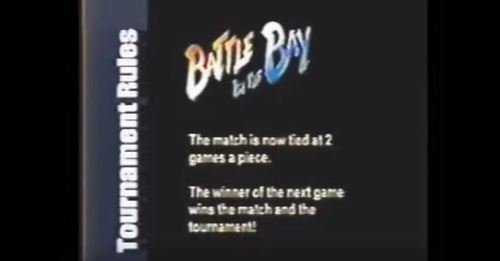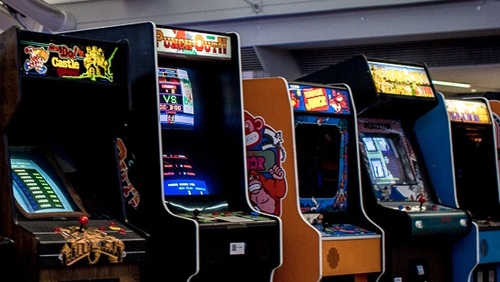Twitch has erected a billion-dollar industry from the act of having a twenty-something broadcast themselves playing Minecraft, League of Legends, or some obscure game on Steam. But while streaming and Let’s Plays may be the “it” things in gaming, they’re really nothing new. All modern viewing platforms have done is commodify something people have done for years. In fact, companies have used people’s fascination with watching someone else play a game to sell you stuff long before Pewdiepie was doing funny voices over terrible PC games.
1. GameCenter CX
There’s a good chance Japanese comedian Shinya Arino is the world’s proto-streamer. He’s been playing retro videogames on air since 2003, as part of the Japanese television show GameCenter CX (the CX likely comes from the call sign of the station which airs the show, Fuji TV One). As part of a fake corporation without a clear purpose, he’s played classics, oddities and kusoge for hours at a time, since his goal is to “clear” any game he plays on the show.
Watch an episode and you’ll see a lot of the themes common in streaming today: overplayed reactions to events in the game, incredulity at dying in key sections, and numerous jump cuts. And like some of the most popular gaming channels, GameCenter CX even spawned its own series of games, only one of which, Retro Game Challenge, made it to the States. What’s surprising about GameCenter CX is that Fuji TV One was confident enough in the idea of someone playing a game to give it an entire hour, which I imagine would be much harder sell here in the states.
2. TechTV/G4
When I say watching a man play a single game for an entire hour would have been a hard sell to American TV execs back in the day, this is why. G4, which gained popularity around the same time as GameCenter CX, featured some game coverage, but a lot its most popular programs (namely Attack of the Show and X-Play), had as many dedicated comedy bits as they did games. Segments whizzed by and were rarely about someone sitting down to play a game for extended periods of time, since most of the shows were locked into half-hour time slots.
Still, it was one of the most popular outlets for videogame discussions and footage in the U.S. when it was big. In a way, G4 was synonymous with the modern idea of “gamer culture” which has dogged our industry ever since. Back in middle school, all I wanted was a chance to watch the channel at a friend’s house, since my parent’s satellite package didn’t cover it. Now, a lot of those programs highlight how far we’ve come since, for better and worse.
3. Fighting Game Event Tapes
If you really wanted to, you could spend your entire day watching people play fighting games on Twitch. Most major tournaments are streamed live, so those unable to make it can still watch them and be disgusting human beings to each other in the chat. But long before fighting game tournaments were ever streamed, people bought VHS tapes of tournaments if they wanted to watch Alex Valle fight John Choi in the finals of the Battle by the Bay tournament back in ‘96.
If you didn’t live on a coast or have people to play fighting games with, these were gold. You wanted to watch these tapes because often they were the only time you were going to watch someone else play a videogame at a high level, or at all. People hadn’t figured out how to insert commentary tracks into game footage yet, so you were left to figure out how players pulled off some of their more ridiculous maneuvers. You also didn’t have someone to contextualize rivalries, which made some matches less impactful. But they were fascinating nonetheless, because even then, these tapes showed just how watchable fighting games are.
4. Nintendo Power Promotional VHS Tapes

How did people watch trailers before they had to bypass age gates online? Many terrible ads for games showed up on TV, but not all games had commercials. Sometimes Nintendo Power, bastion of game journalism ethics that it was, would send out promotional VHS tapes to its subscribers of upcoming games, the most famous of which is the one for Donkey Kong Country. The tape included interviews with staff, extended descriptions of the technology used to make Donkey Kong look like a dried clay sculpture, and of course footage of the game itself, arguably the least interesting part of the tape.
Other companies also sent out similar tapes, but Nintendo’s were the most prominent, since, because of its subscriber base, it had the easiest time getting the tapes directly into readers’ hands. Also notable: the act of getting people to pre-order is nothing new, as the tapes clearly show. Though I’m not sure I would have trusted anyone with my money in that way back then. Probably because I was too young to have any money to begin with.
5. Arcades
For a long time, the most widely available form of watching someone else play a videogame involved a great view of their shoulder. You couldn’t get good versions of arcade games at home for most of their history, and if you had no quarters to throw at The Simpsons arcade game, you had to watch some other kid’s pizza party troupe have at it for hours. Or, if you didn’t have the confidence to face off against the older kids in Street Fighter II, you’d watch them play instead.
Watching was free and wouldn’t embarrass you in front of your friends, so if you were like me, you spent hours at a local arcade without playing anything, getting a good grasp of how dozens of games may have worked. Sometimes you’d gaze at the Sunset Riders attract screen, since the coin slot for it was broken and none of the kids who worked there could fix it. Or, if you felt like being a jerk, you’d backseat drive the people playing Puzzle Fighter and shake your head when it became clear they didn’t know what they were doing. Just like the kids on Twitch do now.
Truly, videogames are the spectator sport of kings.
Suriel Vazquez is a freelance writer who almost failed a basic computer management class because he spent way too much time watching Ricky Ortiz fighting Combofiend in Capcom Vs. SNK 2. He’s written for Paste, Kotaku, GamesBeat, and you can follow him on Twitter.



